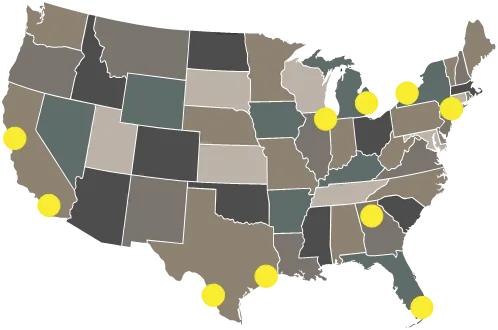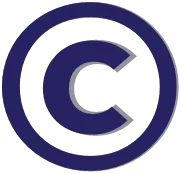
CBP is embracing a renewed approach to trade facilitation and enforcement, focusing on the following key areas:
- Trade Enforcement
- Automated Commercial Environment (ACE)
- Antidumping and Countervailing Duties (AD/CVD)
- Centers of Excellence and Expertise (Centers)
- De Minimis Value Exemption
- Enforce and Protect Act of 2015 (EAPA)
- Forced Labor
- Intellectual Property Rights (IPR)
 Trade Enforcement
Trade Enforcement
CBP has emphasized the proactive and strict enforcement of U.S. trade laws to protect national economic security, facilitate fair trade, support the health and safety of the American people, and ensure a level playing field for U.S. industry.
- CBP Trade Enforcement Operational Approach - Learn more about CBP's trade enforcement operational approach detailing how the organization DETECTS, DETERS, and DISRUPTS fraudulent behavior as a means of protecting America's economic security
- CBP Trade Enforcement Bulletin - The Quarterly CBP Trade Enforcement Bulletin (FY 2016, Quarter 3) highlights specific instances in which CBP enforces U.S. trade laws at and beyond our nation's borders through interagency partnership and collaboration
- Press Release: CBP Creates Trade Enforcement Task Force - The Trade Enforcement Task Force was created to focus its efforts on issues related to Forced Labor, AD/CVD laws, and the interdiction of illicitly imported goods
 Automated Commercial Environment (ACE)
Automated Commercial Environment (ACE)
TFTEA extends funding for ACE, which transmits the private sector's import-export data to 47 PGA's, eliminating over 200 different forms, and streamlining trade processes.
- In support of the 2014 White House Executive Order, CBP is working to complete and deploy core trade processing capabilities in ACE by December 2016, becoming the ACE Single Window
- ACE Features and Benefits - Overview of how manual processes will be streamlined and automated; paper will be eliminated and the trade community will be able to more easily and efficiently comply with U.S. laws and regulations
 Antidumping and Countervailing Duties (AD/CVD)
Antidumping and Countervailing Duties (AD/CVD)
TFTEA established a new administrative procedure for investigating allegations of evasion of AD/CVD orders (i.e., including ability to draw adverse inferences for failing to provide information). CBP enforces AD/CVD orders as part of the agency's efforts to ensure a level playing field for U.S. industry.
- CBP to Implement Executive Order: Establishing Enhanced Collection and Enforcement of Antidumping and Countervailing Duties and Violations of Trade and Customs Laws. Read more about the Executive Orders on protecting the homeland.
- AD/CVD Webpage - Information on CBP's efforts to detect and deter the circumvention of AD/CVD laws
- AD/CVD Brochure - Overview of AD/CVD, one of CBP's Priority Trade Issues (PTIs)
- Enforce and Protect Act (EAPA) Webpage - Information on EAPA, Title IV, Section 421 of TFTEA, which establishes formal procedures for submitting and investigating AD/CVD allegations against U.S. importers
 Centers of Excellence and Expertise (Centers)
Centers of Excellence and Expertise (Centers)
CBP created 10 industry-specific Centers to increase uniformity at the ports, facilitate the timely resolution of trade compliance issues nationwide, and further strengthen the agency's knowledge about industry practices.
- Centers Webpage - Information on how the Centers transform the way CBP approaches trade operations and works with the international trade community; the Centers are aligning with modern business practices, focusing on industry-specific issues, and providing tailored support to unique trading environment.
- Centers Directory - A directory that provides all contact information for each of the Centers
 De Minimis Value Exemption
De Minimis Value Exemption
As a result of TFTEA provisions, CBP raised the De Minimis value, i.e., value of a shipment of merchandise imported by one person in one day that generally may be imported free of duties and taxes, from $200 to $800 per shipment.
- De Minimis Webpage - Information on the outcome of the new De Minimis guidelines for industry stakeholders
- Press Release: De Minimis Value Raises to $800
 Enforce and Protect Act of 2015 (EAPA)
Enforce and Protect Act of 2015 (EAPA)
Title IV, Section 421 of TFTEA is commonly known as the Enforce and Protect Act of 2015 (EAPA). EAPA establishes formal procedures for submitting, and investigating antidumping or countervailing allegations of evasion against U.S. importers.
- EAPA Webpage - Information on CBP's efforts to track and report allegations of evasion, including references and resources related to EAPA investigations
- Enforce and Protect Act of 2015: Overview of the Investigation Process
- Press Release: CBP Establishes New Procedures to Investigate Trade Related Allegations
- Press Release: CBP Launches Online Portal for Filing Enforce and Protect Act Allegations
 Forced Labor
Forced Labor
TFTEA prohibits all products made by forced labor, including child labor, from being imported into the United States.
- Forced Labor Webpage - Information on the United States' stance on the importation of goods produced by forced or indentured child labor, guidance on how the public can report suspected violations, and additional forced labor information
 Intellectual Property Rights (IPR)
Intellectual Property Rights (IPR)
CBP has provided new tools to better enforce IPR, enhance collaboration with IPR holders, and strengthen international partnerships to stop counterfeiting at the source.
- IPR Webpage - Information on how CBP engages in the interdiction of products that infringe on the U.S. trademarks, copyrights, or exclusion orders issued by the U.S. International Trade Commission
- IPR Brochure – Overview of IPR, one of CBP’s Priority Trade Issues (PTIs)
- IPR Hoverboard Enforcement Updates - Learn more about CBP’s interdiction and seizure operations related to violative hoverboard products
- Press Release: CBP Seizes $1.1 Million in Counterfeit Electronics in Joint Operation with Hong Kong Customs

